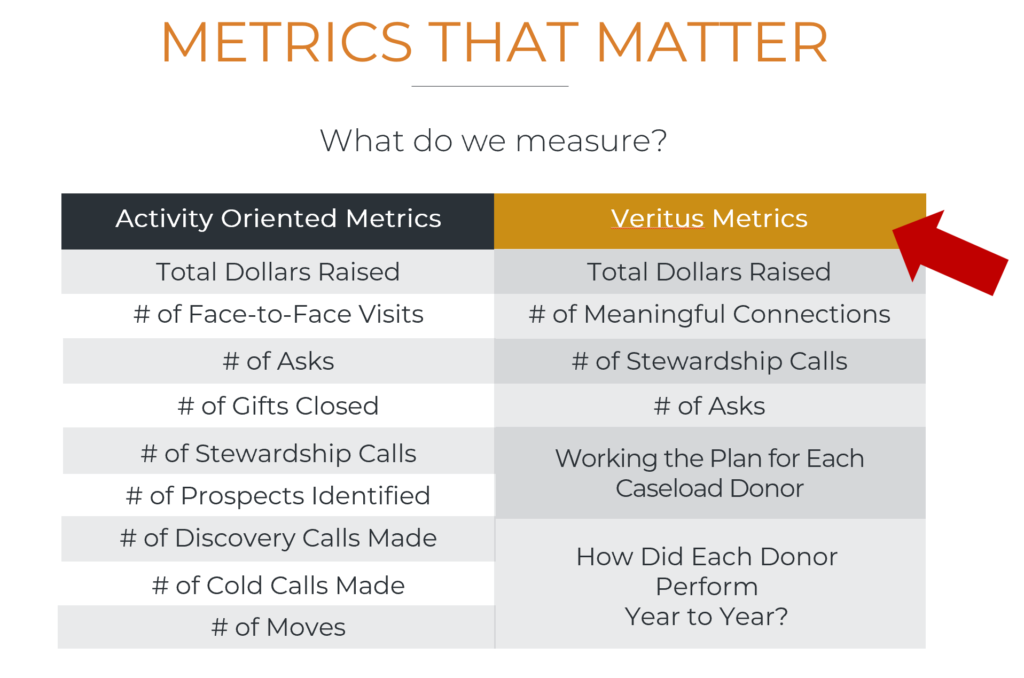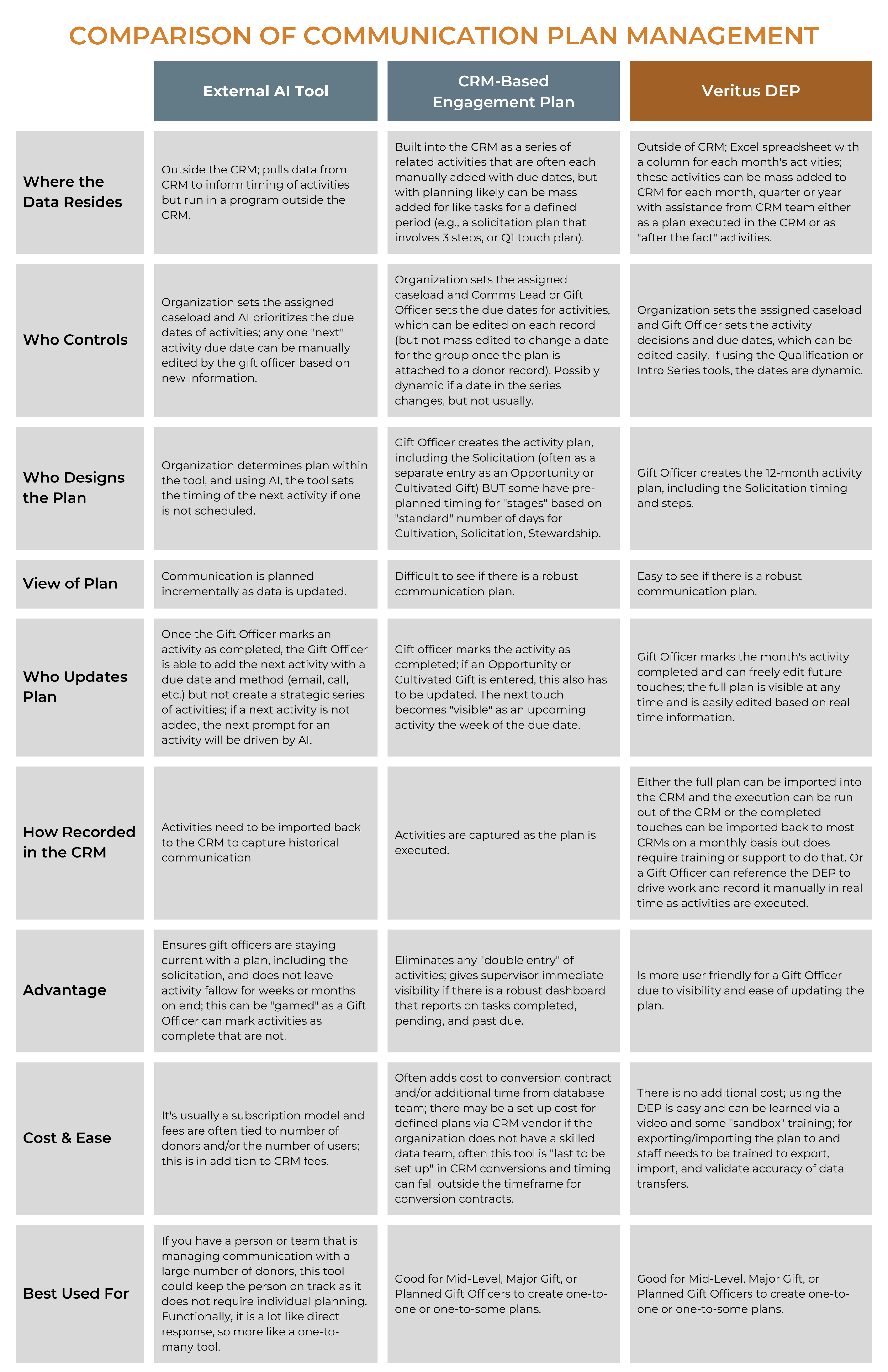How to Love Your Donors After You Leave
Sometime in the next several years, most major gift officers, like you, will leave your non-profit to work for someone else. In fact, today you and...
4 min read
Guest Contributor : April 10, 2024

Yes, I know the phrase is “can’t see the forest for the trees,” and it calls out how we can get so wrapped up in the details that we can’t see the situation as a whole. But the opposite is also true, and it’s a significant problem in relationship management fundraising.
Often, the ready-made tools in a CRM, usually through a dashboard, are generally designed to see trends and a high-level view of a caseload or fundraiser performance. There may be an activity list to show you what you need to do this week, but it’s without context. Just a checklist of “to dos.” Compounding this, the dashboard usually represents some of what a manager wants to know, not what a fundraiser needs to keep on top of each donor relationship.
When you are the relationship manager, each donor is an individual and a focus on the proverbial forest can result in losing sight of the health of each tree. The details matter. They matter a lot. Think about the resulting donor and value retention – or attrition!
So people naturally start creating a series of external lists, or Excel worksheets, or OneNotes, or whatever tool the person feels comfortable using. They are simply trying to solve the problem of “how to stay focused.” The circumstances may be different, but the theme is the same. When you are managing communication with 150 major gift donors or 500-700 mid-level donors, or 200 donors who are interested in a planned gift or have made a planned gift, the day-to-day work filled with normal interruptions during a week along with the actual task of connecting with donors in a meaningful way, makes it hard to keep up. Essentially it results in shadow databases and is not a tenable situation over time.
At Veritus, we recommend you start with understanding the need. While managers who are development professionals are generally faster to understand, there are times when it is the finance team or program leadership who are the people making decisions about resource allocation and they likely don’t understand. On the IT or database manager side, they are juggling competing needs and it’s understandable when they are oriented to creating solutions that address the need for the program with the largest number of donors.
This means there needs to be an understanding of what is at stake. Do you have an analysis of the donor and value attrition of your donors at the $1k to $10k range? The $10k+ range? Do you know where you are stuck? Do you see the value attrition at a line-by-line view, where “new money” does not cover up “lost money”? It will be eye opening. And it will show the economic value of truly grappling with this problem. There may be a lot fewer donors in the Relationship Management programs, but they represent a huge dollar investment in your mission.
About two years ago I worked with an organization that committed to solving these problems in their CRM. They allocated staff time at the “Data & Insights” level as well as their “Salesforce Developer” level. The appropriate managers invested time. And they invested in Veritus to work with them in this process. They set up a project manager to convene the group for discussion and used software to document the identified priorities so we could stay on track. They looked at the Veritus “Metrics that Matter” chart (pictured below) and our Donor Engagement Plan to adapt the principles to the CRM, building the fields to capture information and dashboards for Gift Officer view and for Leadership view.

Here’s what happened:
Mid-Level: MLO team over time grew from 8 to 12 MLOs
Major Gifts: MGO team decreased from 12 to 10 by natural attrition and better fit the number of $10k+ donors
Look, I get that this detail is a lot to absorb. So here is my suggestion: print this out and read it over again, underlining, highlighting, make notes, identifying questions. You can use these Veritus tools to help you work through this: our Free Donor File Assessment, our Relationship Management Tool Comparison chart (see below), this White Paper on Creating Strategic Plans and Goals for Every Major Donor, our Donor Engagement Plan, the Metrics that Matter chart (pictured above), etc.
Seek open conversations on how to get there. Include leadership, your manager, your database manager, all the Donor Relationship Managers. Gain agreement to solve this. Form a smaller group, invest in project management to move it through.
Our brains are not filing cabinets, and our notebooks with scribbles, excel spreadsheets, and all the different ways we try to capture this, is not sustainable. It does not honor the donor. It does not honor the mission.
If your organization can commit to finding efficiencies in your CRM to help you see and care for those trees (see how I brought that back around!), you will raise more resources to grow your mission. Then you will have a healthy, thriving, growing forest. It’s really that simple.
– Diana S. Frazier, Senior Client Experience Leader


Sometime in the next several years, most major gift officers, like you, will leave your non-profit to work for someone else. In fact, today you and...

Everywhere we go, Richard and I are asked, “Where can I find major donors to support our organization?My answer is to stare at the part of their face...

I recently re-read an article in theWashington Poston the new phone etiquette. Their hot take? “Text first and never leave a voice mail.” And while...